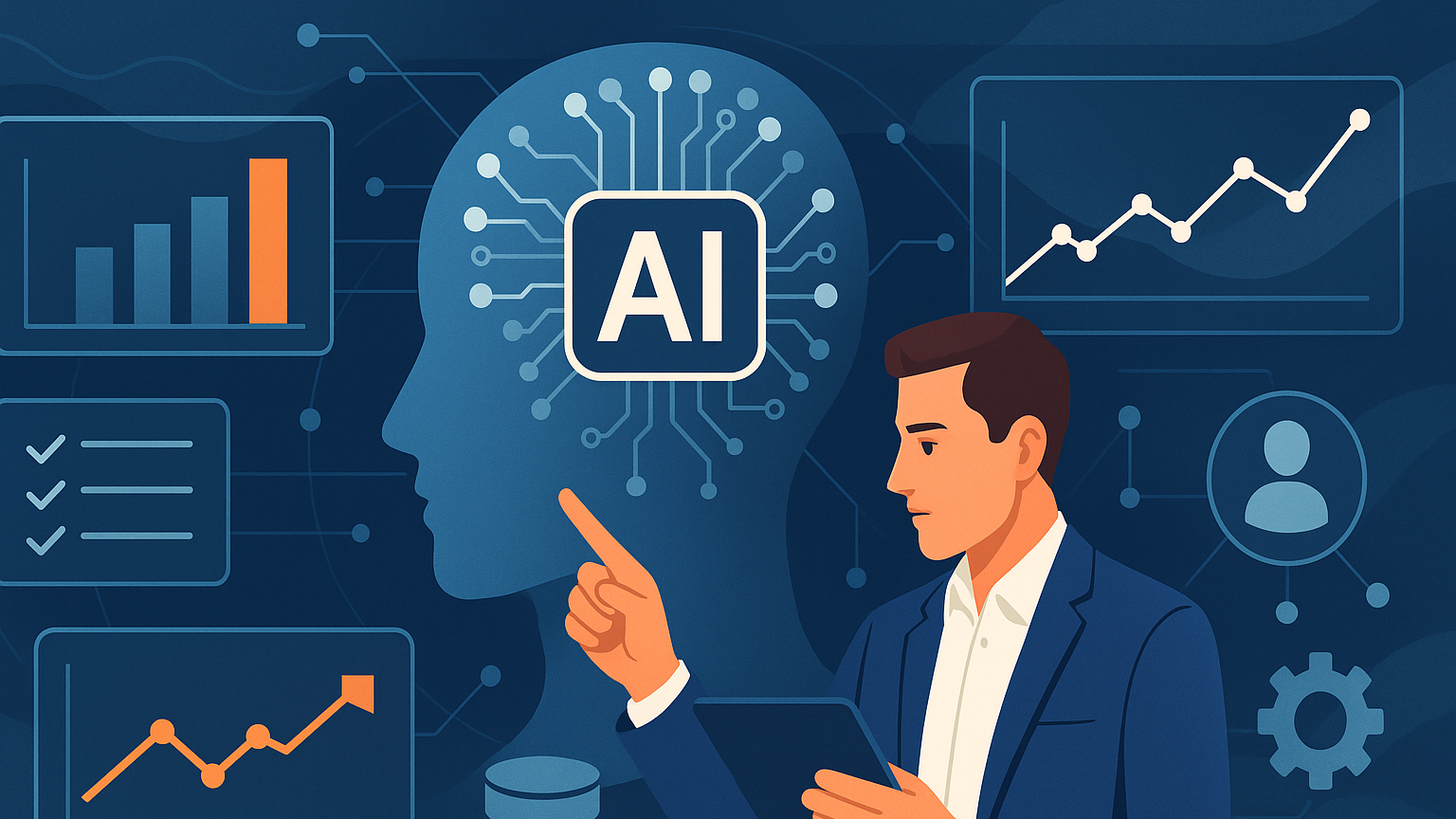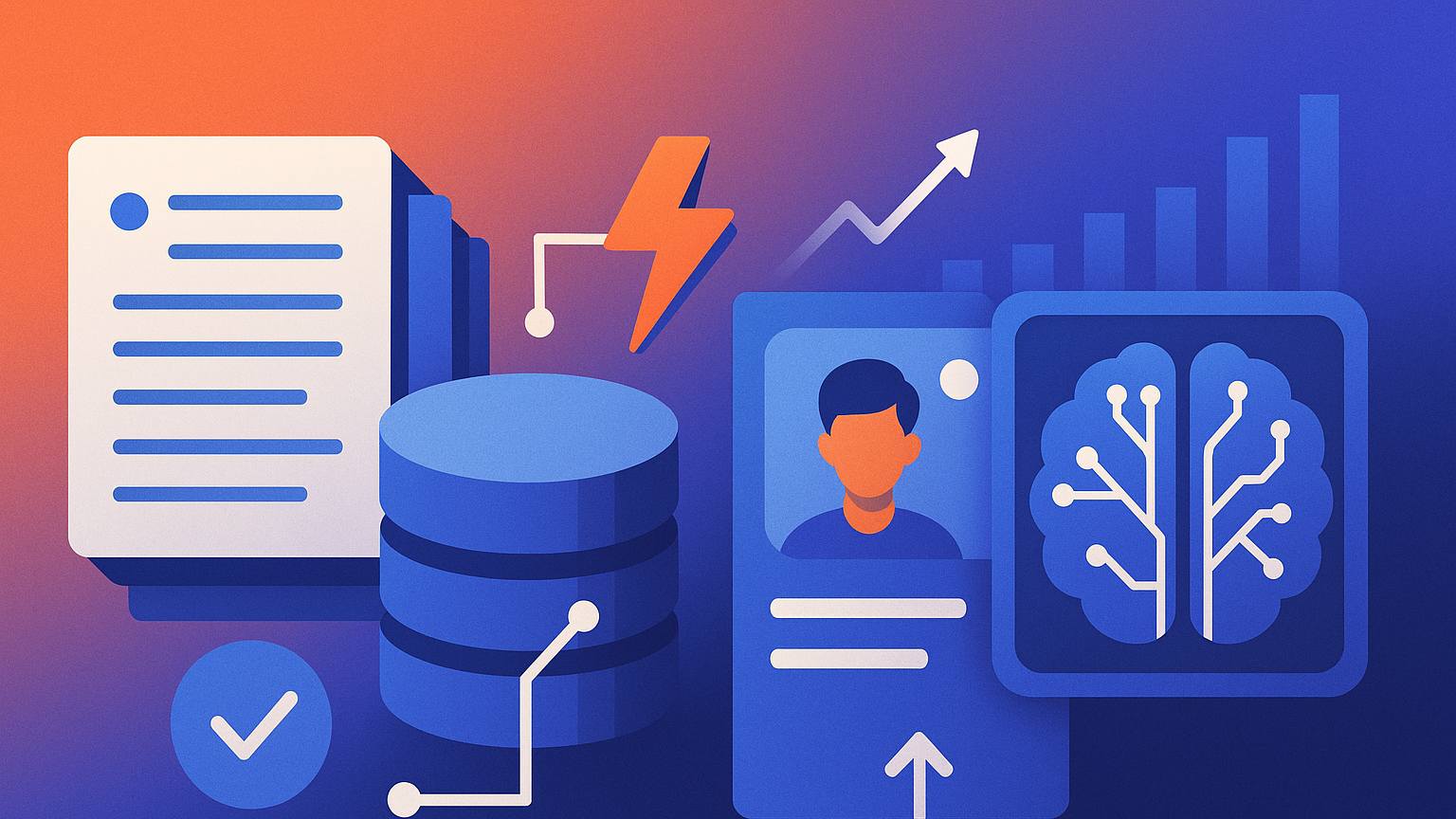
Introduction: Why AI Awareness Matters for Your Key Account Work
You manage some of your company’s most valuable relationships—accounts that determine growth, stability, and reputation. AI isn’t a futuristic add-on anymore; it’s already reshaping how you prioritize accounts, predict churn, personalize engagement, and collaborate internally. Developing AI awareness means you understand what AI can realistically do for your day-to-day tasks, strategic planning, and long-term portfolio health. In this article you’ll get a practical guide that connects AI capabilities to the specific responsibilities and challenges of key account management (KAM), so you can make informed decisions, run better pilots, and extract measurable business value.
What Do We Mean by “AI Awareness” in Key Account Management?
AI awareness is not just technical literacy—it’s the ability to recognize AI opportunities, assess their business value, and use them responsibly in your workflows. For key account managers, that means knowing which AI tools can help with account planning, customer insights, predictive analytics, personalization, and automation, and understanding the data and governance required for those tools to succeed. This awareness helps you ask the right questions of vendors, align projects with account goals, and prepare your organization to adopt AI in ways that enhance relationships rather than replacing them.
Why AI Is a Strategic Imperative for Key Account Management
You’re tasked with deepening relationships, increasing wallet share, and reducing churn. AI accelerates these objectives by turning scattered data into actionable signals—predicting risk, spotting upsell windows, and tailoring outreach at scale. Companies that leverage AI in KAM often report improved forecast accuracy, faster response times, and higher customer satisfaction. Plus, AI frees you from repetitive tasks, giving you more time to do the human work that machines can’t: building trust, resolving complex issues, and co-creating value.
Core AI Capabilities You Should Know
You don’t need to become a data scientist, but you do need to understand the AI capabilities that will touch your work.
- Predictive analytics: Models that forecast churn, revenue, or product adoption based on historical patterns and signals.
- Natural language processing (NLP): Tools that extract insights from emails, meeting notes, and support tickets—helpful for sentiment analysis and theme detection.
- Recommendation systems: Engines that suggest relevant products, modules, or content for cross-sell and upsell.
- Generative AI: Language models that draft emails, proposals, and personalized content, saving you time while maintaining relevance.
- Robotic process automation (RPA): Automations that handle repetitive CRM updates and meeting scheduling.
- Knowledge graphs: Connected views of customers, contracts, people, products, and interactions that enable richer context for decisions.
Understanding these capabilities helps you match problems to solutions and set realistic expectations for outcomes.

How AI Transforms the Key Account Workflow
AI can enhance nearly every phase of the KAM lifecycle, from initial segmentation to long-term strategy. Below you’ll find the major workflow areas AI touches and what to expect.
Account Segmentation and Prioritization
AI enables dynamic segmentation based not only on revenue but on engagement signals, strategic alignment, product fit, and risk metrics. Instead of static tiers, you get fluid prioritization that tells you which accounts need proactive outreach and which will benefit from digital nurtures. This helps you allocate time and resources more precisely.
Account Planning and Strategy
AI-assisted account planning synthesizes historical win/loss data, usage patterns, and broader market signals to recommend growth plays and risk mitigation steps. You can use AI to simulate different scenarios, estimate potential lift from targeted initiatives, and surface competitive threats, making your account plans more evidence-based.
Customer Insights and Relationship Intelligence
NLP and conversation intelligence tools digest emails, calls, and meeting transcripts to extract sentiment, topics, and key stakeholders. You’ll see an ongoing map of who influences decisions, who’s disengaged, and where relationships are warming or cooling. This intelligence reduces blind spots and helps you tailor your engagement style.
Forecasting and Pipeline Management
Predictive models offer more accurate forecasts by combining CRM data with product usage, payment behaviors, and external signals like market trends. You’ll find that your revenue forecasts become less opinion-driven and more signal-driven, which improves trust with finance and exec teams.
Personalization and Outreach
Generative AI and recommendation engines let you personalize touchpoints at scale—customized proposals, targeted content, and optimized outreach timing. You can maintain a high-touch perception even when you’re coordinating across dozens of accounts, because AI helps you surface the most relevant messages and assets.

Churn Prevention and Risk Detection
AI flags accounts at risk of churn earlier than manual review. It can spot declines in usage, negative sentiment, or payment delays and suggest specific retention plays. By acting earlier, you preserve revenue and protect relationships that might otherwise deteriorate unseen.
Proposal Generation and Pricing
AI helps craft data-backed proposals, including suggested recommendations, ROI calculations, and tailored pricing options. When negotiating, AI can simulate outcomes based on historical concession patterns and suggest win-win alternatives that protect margin while boosting acceptance.
Meeting Preparation and Follow-up
Before a key meeting, AI can summarize recent interactions, highlight issues to address, and suggest talking points tailored to attendees. After the meeting, AI drafts concise follow-up emails, action lists, and updates your CRM automatically. This reduces administrative friction and ensures momentum.
Data Foundations: What You Need to Make AI Work
AI is only as good as the data it consumes, so you’ll need to focus on data hygiene and integration.
CRM Hygiene and Integration
Your CRM is the primary source of truth for account data, but only if it’s accurate and complete. You should standardize fields, enforce mandatory updates for key events, and connect CRM with product usage, billing, support, and marketing platforms. Integration gives AI the rich context it needs to generate reliable insights.
Data Quality and Enrichment
AI requires consistent, historical data. Cleanse duplicates, normalize naming conventions, and enrich records with firmographic and technographic information. External enrichment sources—public company data, intent signals, and social profiles—can elevate AI models’ performance in segmentation and upsell prediction.

Privacy, Compliance, and Consent
You must ensure data usage complies with regulations like GDPR, CCPA, and industry-specific rules (e.g., HIPAA or financial regulations). Define what data you can use for AI models, obtain consent where necessary, and maintain audit trails. This protects customer trust and shields your organization from legal exposure.
Practical Roadmap to Implement AI in Your KAM Practice
AI adoption becomes manageable when you follow a stepwise approach that balances quick wins with strategic investments.
Step 1 — Assessment and Alignment
Start by mapping your most painful problems: forecast inaccuracy, high churn, missed upsell, slow proposal turnaround. Align AI initiatives with clear KPIs and executive sponsors. You need business goals to drive use case selection.
Step 2 — Quick Wins and Pilots
Select 1–3 high-impact, low-complexity pilots—like automated meeting summarization, churn prediction for a segment, or AI-assisted proposal templates. Quick wins build trust and surface integration challenges before you scale.
Step 3 — Integrate and Scale
Once pilots prove value, integrate AI services into your CRM and workflows. Standardize playbooks that incorporate AI outputs, train teams, and define service levels for model refreshes and data pipelines.
Step 4 — Governance and Continuous Improvement
Set up governance that covers model validation, bias monitoring, data access controls, and performance tracking. Create feedback loops where KAMs can flag false positives/negatives to improve models.
Step 5 — Cultural Adoption and Measurement
Adoption is as much cultural as technical. Track usage, satisfaction, and business metrics. Celebrate wins publicly and iterate on processes to embed AI into the KAM culture.

Choosing Tools and Vendors: What to Look For
Your vendor selection should favor practicality, security, and interoperability.
- Integration capability: The solution should plug into your CRM, communication channels, and product telemetry.
- Domain adaptability: Tools that learn your industry language or allow you to fine-tune models to your data will perform better.
- Explainability: Preference for vendors that provide transparent reasoning for AI recommendations.
- Security and compliance: Validate certifications and data handling policies.
- Support and onboarding: Choose vendors with strong professional services or success teams to help with rollout.
You don’t need every feature; pick tools that solve your highest-priority use cases and extend from there.
Roles and Skills: Who You Need on Your Team
AI changes how you work and introduces new roles to support it. As a KAM, you’ll likely interact with or influence the following functions:
- Data engineers: Build and maintain the pipelines that feed models.
- Data scientists/ML engineers: Build, tune, and monitor predictive models.
- Product managers or AI translators: Bridge between tech teams and KAMs to shape requirements and measure outcomes.
- AI ethics or governance leads: Ensure responsible AI usage and compliance.
- Training and adoption specialists: Design programs to help KAMs use AI effectively.
You should also invest in upskilling yourself and your peers—learning to interpret AI outputs, challenge model recommendations, and provide constructive feedback for improvement.
Human-AI Collaboration: Keep the Relationship Human
AI should augment—not replace—your relationship work. The best outcomes come when AI handles repetitive tasks, surfaces signals, and suggests options while you apply judgment, nuance, and emotional intelligence. Use AI to prepare for sensitive conversations, but be the one to deliver high-stakes messages, negotiate, and build long-term trust.
Ethics, Bias, and Trust: Responsible AI in KAM
You’ll run into ethical questions: Is the AI unfairly targeting certain accounts? Is data usage transparent to the customer? Are decisions explainable? Build simple principles: transparency with customers when AI influences decisions, regular bias audits for models (e.g., do models unfairly deprioritize small but strategic customers?), and clear escalation paths for disputed AI recommendations. Trust is a two-way street; if customers suspect opaque automation is replacing human care, relationships can erode quickly.
Measuring Impact: KPIs to Track
To demonstrate ROI, connect AI initiatives to metrics that matter to stakeholders.
- Revenue impact: Incremental revenue from upsells, cross-sells, and retention.
- Churn rate: Reduction in churn at account or segment level.
- Forecast accuracy: Improvements in variance between forecasted and actual revenue.
- Time savings: Hours saved per account manager on administrative tasks.
- Adoption metrics: Percentage of KAMs using tools and their satisfaction scores.
- NPS or CSAT changes: Movement in customer satisfaction or loyalty after targeted interventions.
You should define baseline metrics before pilots so you can quantify improvement and identify unintended consequences.
Use Cases: How You’ll Apply AI in Everyday KAM Tasks
Below are concrete use cases you can implement. Each includes what you’ll need and expected benefits.
Churn Prediction and Early Intervention
By combining usage data, support interactions, and sentiment signals, AI models can predict churn probability. You’ll receive prioritized lists of at-risk accounts with recommended actions—such as an executive call, product training, or contractual adjustments. Benefits include earlier interventions and higher retention.
Upsell and Cross-sell Recommendations
AI recommends the right expansion offers based on product fit, adoption patterns, and peer behaviors from similar accounts. This increases conversion rates and shortens sales cycles by making proposals more relevant.
Conversation Intelligence for Relationship Health
Transcripts and summaries of calls reveal topics of concern, stakeholder shifts, and competitor mentions. You’ll be able to act on negative sentiment faster and reinforce positive experiences with targeted follow-up.
Personalized Content and Proposal Generation
Generative AI can draft tailored proposals, executive summaries, and case studies that resonate with specific stakeholders. You’ll spend less time on editing and more time on strategy and negotiation.
Executive Briefings and Account Dashboards
AI compiles one-page executive briefings with health scores, revenue trajectory, and recommended plays. These save you time in preparing for quarterly business reviews and align internal stakeholders on priorities.
Contract and Risk Analysis
AI can scan contract terms to surface renewal dates, termination clauses, and pricing concessions. You’ll avoid missed renewals and better prepare for negotiations.
Pricing and Concession Optimization
By analyzing historical concessions, customer sensitivity, and competitive pricing, AI suggests optimal discounts or bundling that maximize take rate while protecting margin.

Sector Examples: How Use Cases Vary by Industry
AI applications will look different depending on your industry, customer expectations, and regulatory constraints. Here are succinct sector-focused examples.
SaaS / Technology
You’ll rely heavily on usage telemetry and product analytics. Predictive models focus on adoption, feature churn, and engagement. Generative AI helps produce technical proposals and ROI calculators.
Manufacturing / Industrial
Account relationships often hinge on supply chain health and project timelines. AI helps predict service needs, schedule preventative maintenance, and align spare parts recommendations with account lifecycle.
Pharmaceuticals / Healthcare
You’ll need rigorous compliance and sensitivity. AI helps map stakeholders, track prescription adoption patterns (where allowed), and coordinate value-based care proposals. Data privacy requirements are critical.
Financial Services
AI supports risk profiling, product recommendations, and compliance monitoring. The emphasis is on explainability for regulatory scrutiny and preserving human oversight for sensitive advice.
Telecom / Utilities
You’ll manage complex contracts and long-term infrastructure investments. AI supports churn prediction tied to service disruptions, localized promotions, and capacity planning.
Retail / Consumer Goods (B2B channels)
AI helps forecast demand for wholesale accounts, recommend assortments, and improve promotional planning. Integration with supply chain and POS data is key.
Best Practices for Integrating AI into Your Daily Routine
These practical tips help you realize benefits without disrupting your relationship-driven work.
- Start small: Adopt one feature at a time (e.g., meeting summaries) and scale from proven wins.
- Treat AI outputs as advisory: Use recommendations as input for your judgment.
- Keep customers in the loop when automation touches them: Clarify when workflows are automated and offer human alternatives.
- Build playbooks tied to AI signals: For example, when churn risk exceeds a threshold, follow a prescribed retention play.
- Maintain a feedback loop: Report false positives/negatives so models get better over time.
These practices protect relationships while increasing efficiency and effectiveness.
Common Pitfalls and How You Avoid Them
You’ll encounter obstacles—here’s how to navigate common ones.
- Overreliance on AI: Don’t let models supplant your judgment. Keep human review for critical decisions.
- Poor data quality: Invest in CRM hygiene first; bad inputs produce misleading AI outputs.
- Lack of adoption: Don’t deploy tools without training and clear incentives; adoption is crucial for value.
- Ignoring ethics and compliance: Failing to consider legal constraints can cause reputational damage and fines.
- Trying to solve everything at once: Focus on focused pilots with measurable KPIs.
Anticipate these pitfalls and you’ll maintain control over both outcomes and relationships.
Building a Culture that Embraces AI
Successfully embedding AI in KAM requires culture change. Encourage curiosity about AI, reward data-backed decisions, and create cross-functional forums where KAMs, data teams, and product owners collaborate. Celebrate quick wins publicly, and use them to show how AI frees time for high-value relationship work. Training programs should combine tool usage, understanding model outputs, and ethical guidelines so every account manager feels confident using AI.
Vendor Integration Scenarios and Technical Considerations
When integrating third-party AI, focus on the following technical considerations.
- APIs and middleware: Ensure robust APIs or middleware for connecting AI capabilities to CRM and communication platforms.
- Data residency and encryption: Verify where data lives and how it’s secured—this impacts compliance and trust.
- Model retraining cadence: Understand how often models are retrained and how you’ll feed them new labeled data.
- Customization options: Confirm you can fine-tune models with your own account data and terminology.
- SLAs and support: Ensure the vendor offers support, especially during rollout phases.
Being precise about these requirements upfront saves time and prevents expensive rework.
ROI Calculation: How You’ll Justify AI Investment
To pitch AI investments, build a model that compares cost to benefit over 12–24 months. Include revenue upside from saved accounts and increased expansions, cost savings from reduced admin time, and productivity gains from faster forecast cycles. Factor in software subscriptions, integration costs, and change management. Start with conservative estimates and aim to demonstrate a payback period within a year for initial pilots.
Continuous Learning: Keep Improving Your AI Practice
AI is not a one-off project; it evolves. Keep a cadence for reviewing model performance, account outcomes, and user feedback. Regularly retrain models with fresh labeled data and new signals, and rotate KAMs through sessions where they learn about updates and new features. Consider setting up a community of practice where you and other account leaders share successful plays and improvement ideas.
Preparing for the Next Wave: Emerging Trends That Affect Your Accounts
Stay ahead by watching these trends that will shape KAM in the near future: real-time AI insights embedded into collaborative tools, multimodal AI that understands audio and video from customer interactions, more transparent explainability features, and verticalized AI models tuned for specific industries. You’ll want systems that can evolve with these capabilities so your investment remains future-proof.
Quick Checklist: First 90 Days to Start Using AI in KAM
If you want to move quickly, here’s a simple sequence to follow in your first three months:
- Identify one high-impact problem and set a measurable KPI.
- Clean CRM data for the accounts in scope.
- Run a pilot with a vendor or internal team for the selected use case.
- Train KAMs on the tool and collect feedback from day one.
- Measure results and plan to scale the pilot if KPIs improve.
This pragmatic approach helps you get momentum while minimizing risk.
Final Thoughts: Balancing Technology and Trust
AI gives you powerful tools to strengthen customer relationships, but it’s not a substitute for human empathy and strategic judgment. Use AI to reduce friction, highlight opportunities, and give you more context so you can focus on the highest-value interactions. When you pair AI signals with your relationship expertise, you can deepen trust, increase retention, and expand account value more predictably. Approach AI with practical curiosity, measurable goals, and a commitment to responsible use—and you’ll see it transform your KAM practice.
